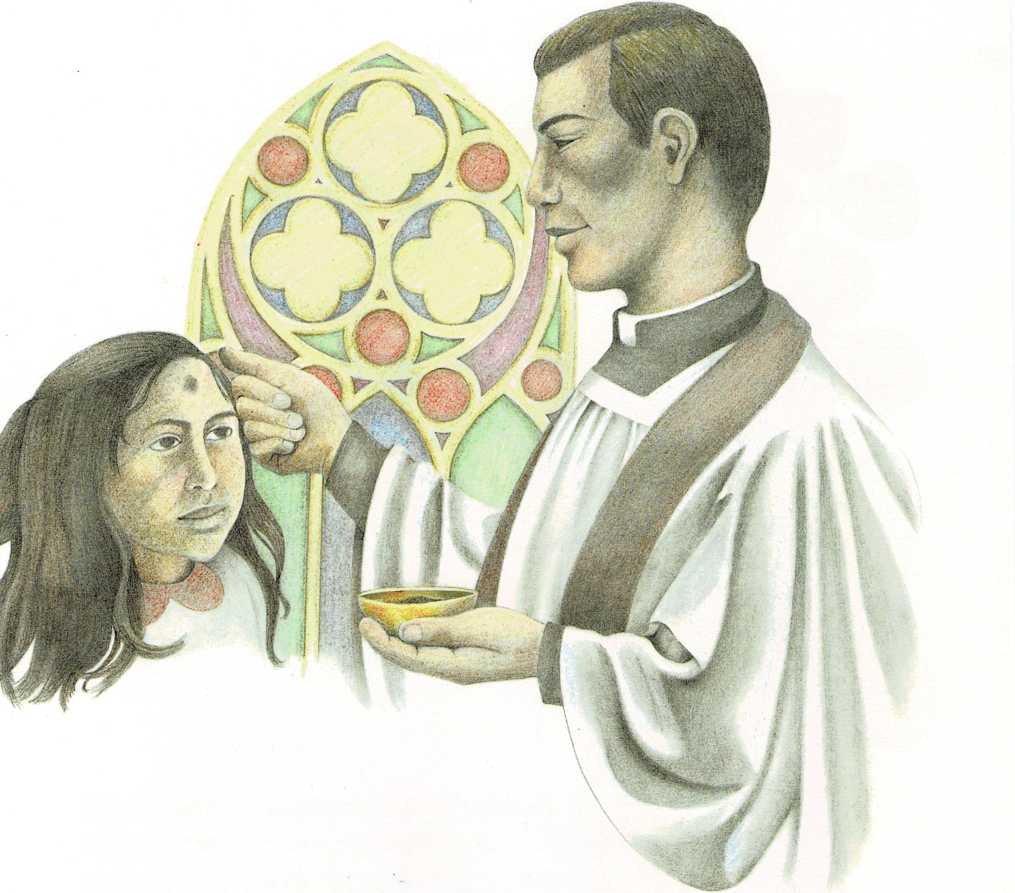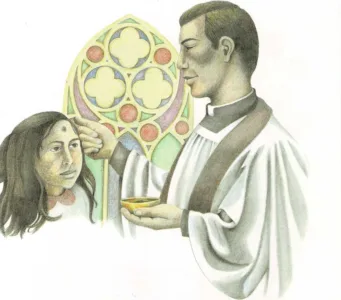Ash Wednesday
The beginning of Lent
Ash Wednesday is the first day of Lent. It can be as early as February 4
or as late as March 10. The exact date depends on the date set for
Easter Sunday (see page 142).
Ash Wednesday is observed in Roman Catholic churches and in some
Protestant churches. In Roman Catholic churches, ashes from burned palm
leaves are blessed. A priest then uses these ashes to mark a cross on
each person’s forehead. The ashes are to remind people that they came
from dust and will one day return to dust.
Lent is a religious season that is a time of fasting (not eating as much
food as usual) and of prayer. Lent begins on Ash Wednesday, forty days
before Easter (not counting Sundays) and ends on Easter Sunday. The
forty days of Lent are to remind people of the forty days Jesus fasted
in the wilderness. The word Lent comes from the Old English word
lencten, which means \”spring.”
In many countries, special foods are eaten during Lent. These foods are
usually a substitute for meat. In Ireland, people have a dish called
champ. It is made up of scallions, a kind of onion, whipped in with hot
mashed potatoes and served with a lump of butter in the middle.
The English also make special foods for

Lent. One is a pudding of flour and milk, flavored with fruit syrups.
Because it can be made quickly, it is known as hasty pudding.
In most places, fish is a standard food throughout Lent. So are eggs.
But there was a time when people were forbidden to eat fish, eggs, and
butter, as well as meat. During the forty weekdays of Lent they could
have only bread and water.
Many religious groups have times of fasting. Jews fast on Yom Kippur,
the Day of Atonement (see page 264). Muslims fast during the month of
Ramadan (see page 208).
The ashes used in Ash Wednesday services come from burned palm leaves.

